| ALL |
|
MOSCOW, RUSSIA
| OVERVIEW |
|
| |
Moscow has displayed variants of every major international style in 20th-century architecture, as well as some peculiar stylistic hybrids. At the beginning of the 20th century, the most decisive impact of the style moderne (the Russian equivalent of Art Nouveau) on the city's architecture occurred in the development of apartment and office buildings, whose standards of efficiency, comfort, and technological progress were suited to accommodate the growth of an increasingly prosperous professional and middle class. The distinctive aesthetic approach of the style moderne, with its emphasis on the decorative arts, also appeared in the design of the private house, primarily for the merchant elite.
Fedor Shekhtel (1859-1926), Lev Kekushev (1863-1919), and William Walcot (1874-1943) were among the most prominent of the many Moscow architects that designed in the new style. Shekhtel produced the greatest body of work in the style moderne. However, the new style's most impressive monument in Moscow is the Hotel Metropole (1899-1904), designed by Walcot with the assistance of Kekushev and other architects. There are many aspects of the Metropole that classify it as a landmark of the style moderne, including a concept in which the structural mass is shaped without reference to illusionistic supporting elements. The facade itself contains little reference to the classical order system. The contrasts of textures and materials create a space within which the decorative arts and structural form are combined. Of particular note are the large ceramic tile panels by Mikhail Vrubel and Alexander Golovin.
The style moderne in Moscow was complemented by a variant known as the neo-Russian style, which kept the new style's emphasis on plasticity and asymmetry but allowed a greater role for decorative elements drawn from traditional folk motifs. The most notable proponents of the neo-Russian School in Moscow were the artists Viktor Vasnetsov (1848-1926) and Sergei Maliutin (1859-1937). The latter's Pertsov apartment house (1905-07) is a particularly well-preserved example of the style.
By the end of the 1900s, the style moderne had yielded to or merged with a form of neoclassical revival known in Russian as neoklassitsizm, which ranged from historicist designs of Ivan Zholovskii (1867-1959) to a modernized, stripped classicism. In Moscow, the most accomplished revivalist was Roman Klein (1858-1924), the architect of the Museum of Fine Arts (1897-1912) and the Muir and Mirrielees department store (1906-08). Although less prolific than Klein, other architects distinguished themselves in a more modern variant of neoclassicism: Illarion Ivanov-Schitz (1865-1937), Alexander Kuznetsov (1875-1954), Boris Velikovsky (1878-1937), the Vesnin brothers, and Ivan Rerberg (1869-1932), who designed one of the first Moscow skyscrapers, the Northern Insurance Company Building (1909-11), for the Kitai-Gorod district in the heart of Moscow's commercial center. In the same district, Ivan Kuznetsov designed a large office complex called Business Court (1912-13), which combined classicizing details with the extensive use of reinforced concrete.
After the revolution and civil war, construction gradually resumed in the mid-1920s in Moscow, which had now become the capital of the entire USSR. At first, the ideals of the avant-garde held sway in educational institutions and in cultural circles. The leading movement of the period, Constructivism, appeared in the design of state office buildings, apartment houses, and workers' clubs throughout Moscow. Notable monuments include the Izvestiia Building (1927) by Grigorii Barkhin (1880-1969), the Zucy Workers' Club (1927-29) by Ilia Golosov (1883-1945), the State Trade Agency (1925-27) in Gostorg, designed by Boris Velikovsky (1878-1937), the apartment house for the People's Commissariat of Finance (1928-30) in Narkomfin by Moisei Ginzhurg (1892-1946) and Ignary Milinis (1899-1974), the Commissariat of Agriculture (1929-33) by Aleksei Shchusev (1873-1949), and the Palace of Culture of the Proletarian District (1932-37) by the Vesnin brothers. Although he did not consider himself one of the Constructivists, Konstantin Melnikov (1890-1974) created a number of highly innovative works in Moscow, such as the Rusakov Club (1927-29).
With the beginning of the Stalinist era and the intensified pace of industrialization, state-sponsored architectural design in Moscow turned to more conservative stylistic approaches. Not only was architecture commanded to glorify the achievements of the new industrial power, but the very appearance of Moscow was also transformed. The earlier disputes between the "urbanists" and "deurbanists" were resolved in favor of regulated but intensive urban development, as set forth in a speech by Stalin's satrap Lazar Kaganovich at the Central Committee plenum in June 1931. As a result, Moscow developed a comprehensive city plan by Vladimir Semenov (1874-1960) and Sergei Chernyshev (1881-1963) that served as a setting for the new monumental architecture.
By the time the Moscow plan was formally adopted in 1935, measures were underway to implement a major reconstruction of the Soviet capital. The Okhotny Rid marker area between the Bolshoi Theater and the Kremlin was cleared, and the former Tverskaia Street, renamed in honor of Maxim Gorky in 1932, was widened and endowed in 1936-40 with rows of buildings primarily designed by Arkady Mordvinov (1896-1964) in an eclectic style that defines the early phase of Stalinist architecture. Other major projects included the construction of Peace Prospect as the main thoroughfare in the north of the city, Gorky Park of Culture and Rest (1934-36) designed by Alexander Vlasov (1900-62), and the construction of the first phases of the Moscow subway.
After World War II, Moscow's architecture achieved new levels of decorative extravagance, epitomized by the Stalinist skyscrapers. Ultimately, only seven of the towers were built (the eighth was intended for a site to the southeast of Red Square, now occupied by the Hotel Rossiya). Their placement defined certain key points in the topography of the city—a role emphasized by their large spires, reminiscent of both medieval bell towers and the spires of Petersburg. The role of a vertical dominant in organizing a low, seemingly chaotic array of surrounding structures had long been a feature of Russian architecture, and although not all these "tall buildings" (vysotnye zdaniya) were originally designed with spires, they obtained them in the final designs as a recognition of their symbolic and visual role in a city that would retain a largely horizontal, "communal" profile.
To the southeast of the city center, Dmitri Chechulin (1901-81), assisted by a team of architects
and engineers, erected a 24-story apartment building with ramifying wings on the Kotelnicheskaia Quay at the confluence of the lauza and Moscow Rivers in 1948-52. On the north of the Boulevard Ring, Aleksei Dushkin (1903-77) designed an office and apartment building at Lermontov Square in 1953, and in the same area, Leonid Poliakov (1906-65) built the Hotel Leningrad (1949-53) near the Leningrad Station. The west portion of the Boulevard Ring was marked by an apartment building by Mikhail Posokhin (1910-89) and Ashor Mndoiants (1909-66) at Insurrection Square in 1950-54. At the southwest portion of the Ring stands the Ministry of Foreign Affairs and Foreign Trade (1948-53) on Smolensk Square by Vladimir Gelfreikh (1885-1967) and Mikhail Minkus (1948-53). Further to the southwest, beyond the Moscow River, is perhaps the most grotesque of the seven: the Hotel Ukraina (1950-56) by Arkady Mordvinov.
However, the most imposing of all was the new central building of Moscow State University on Lenin (formerly Sparrow) Hills, a grandiose, symmetrical complex built in 1949-53 to a design by Lev Rudnev (1885-1956), Pavel Abrosimov (1900-61), and Alexander Khriakov (1903-76). The main architect, Rudnev, had played an important role in defining Soviet monumentalism with buildings such as the M.V. Frunze Military Academy (1932-37, in collaboration with V.O. Munts), whose rectangular mass was defined in early "collegiate style" by an unyielding grid of square windows above a long stylobate. The new university building represents a later, flamboyant stage of totalitarian architecture and was designed as a self-contained and tightly regulated community, a melding of utopian notions of communism with the unparalleled elitism of the late Stalinist period.
The post-Stalinist period in Moscow architecture was dominated by Mikhail Posokhin, who became the main architect of the city. In the 1960s, Posokhin adapted the international modern style, with its glass and aluminum facades, to industrialized methods of construction in the creation of such ensembles as Kalinin Prospekt (1964-69), also known as the New Arbat. Extending westward from the Kremlin and Arbat Square, its identical towers and shopping complexes provided the capital with the facade of cosmopolitan prosperity (and its leaders with a direct highway to their dachas). However, the complex wreaked incalculable and lasting damage on the original Arbat district. To the right of the bridge that takes Kalinin Prospekt over the Moscow River, Posokhin and Mndoiants interpreted modernism in more dramatic fashion in their "open book" design for the building of the Council of Mutual Economic Assistance (1964-69), the institution through which Moscow controlled its economic relations with the countries of the Warsaw Pact. In a similar repetitive style, a team headed by Dmitii Chechulin (and assisted with Komsomol labor) built the gargantuan Hotel Rossiya near Red Square in 1964-69, with accommodations for 6,000 guests.
Posokhin was also entrusted with devising a new general plan for Moscow, which was accepted by the Central Committee and Council of Ministers in 1971. The city's boundary was extended to the limits of the new ring expressway (and even some areas beyond), within which were eight large zones. The outer zones contained numerous developing microregions, designed within a system of new transportation arteries. These areas were marked above all by vast "housing massifs" with thousands of apartments. Although successful in increasing the city's usable space, the period produced only a few examples of distinctive architecture, such as the Children's Music Theater (1979) by Alexander Velikanov and V. Krasilnikov.
Although Soviet-era construction methods continue for large projects such as housing developments, post-Soviet architecture in Moscow has been influenced by Western styles and building techniques. Notable recent examples of this tendency include Moscow International Bank (1991-94), the McDonald's Corporation building (1990-93), the Sovmortrans Building (1990-95), the International Business Center of the Academy of National Economy (1992-95), the Gazprom Building (1996-97), and the International Cultural Complex (1989-2000). With a disproportionate share of the country's investment capital, Moscow and its architecture have entered a phase of rapid change that has undoubtedly led to losses for the historic fabric of the city but has also in many cases produced an exciting and colorful urban environment.
WILLIAM C. BRUMFIELD
Sennott R.S. Encyclopedia of twentieth century architecture,Vol.2 (G-O). Fitzroy Dearborn., 2005. |
| |
|
| |
|
| |
|
| |
|
| |
|
| |
|
| |
|
| GALLERY |
|
| |
 |
| |
1911, Post Office, Moscow, RUSSIA, VESNIN BROTHERS |
| |
|
| |
 |
| |
1927, MELNIKOV HOUSE, MOSCOW, RUSSIA, KONSTANTIN MELNIKOV |
| |
|
| |
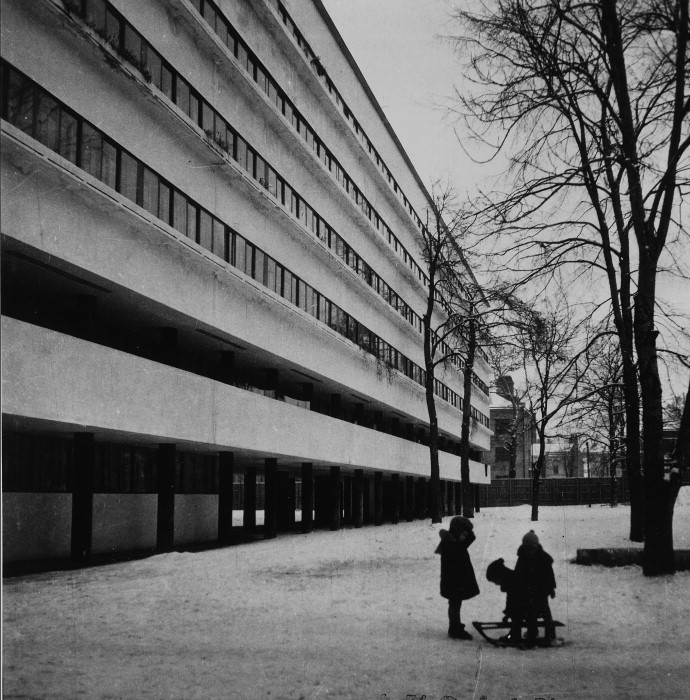 |
| |
1928, NARKOMFIN HOUSE, MOSCOW, RUSSIA, MOISEI GINZBURG |
| |
|
| |
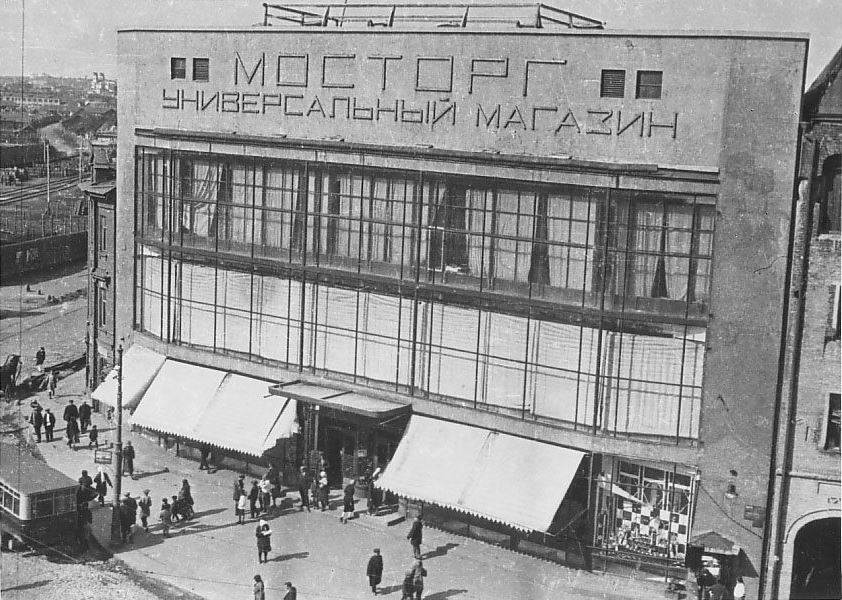 |
| |
1929, Mostorg Department Store, Moscow, RUSSIA, VESNIN BROTHERS |
| |
|
| |
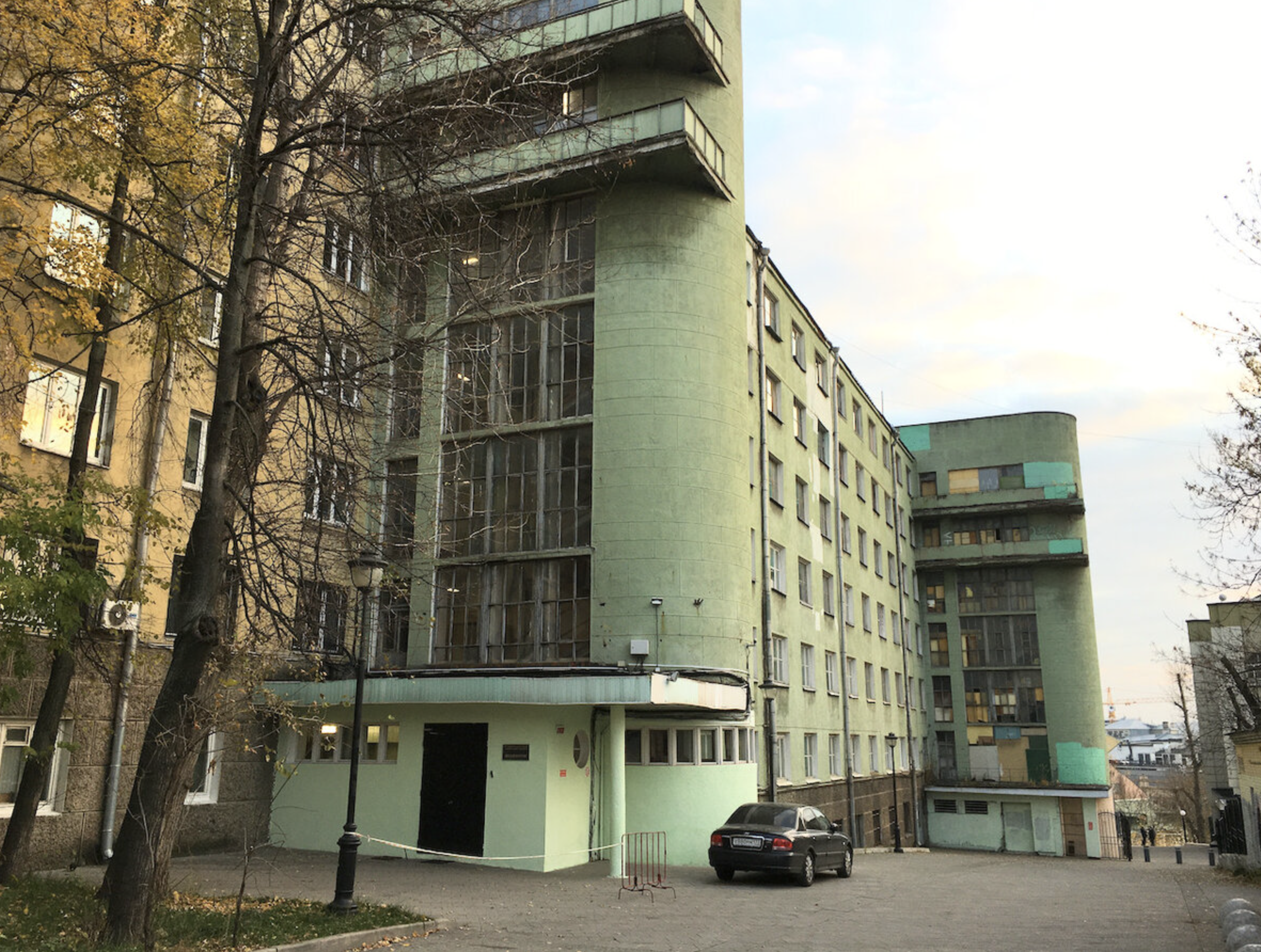 |
| |
1930, Student housing of Communist University of the National Minorities of the West, Moscow, USSR, G. Dankman |
| |
|
| |
 |
| |
1933, Centrosoyus, Moscow, Russia, LE CORBUSIER |
| |
|
| |
 |
| |
1934, Society of Tsarist Political Prisoners Club, Moscow, RUSSIA, VESNIN BROTHERS |
| |
|
| |
 |
| |
1937, Proletarian Region Club,
Moscow, RUSSIA, VESNIN BROTHERS |
| |
|
| |
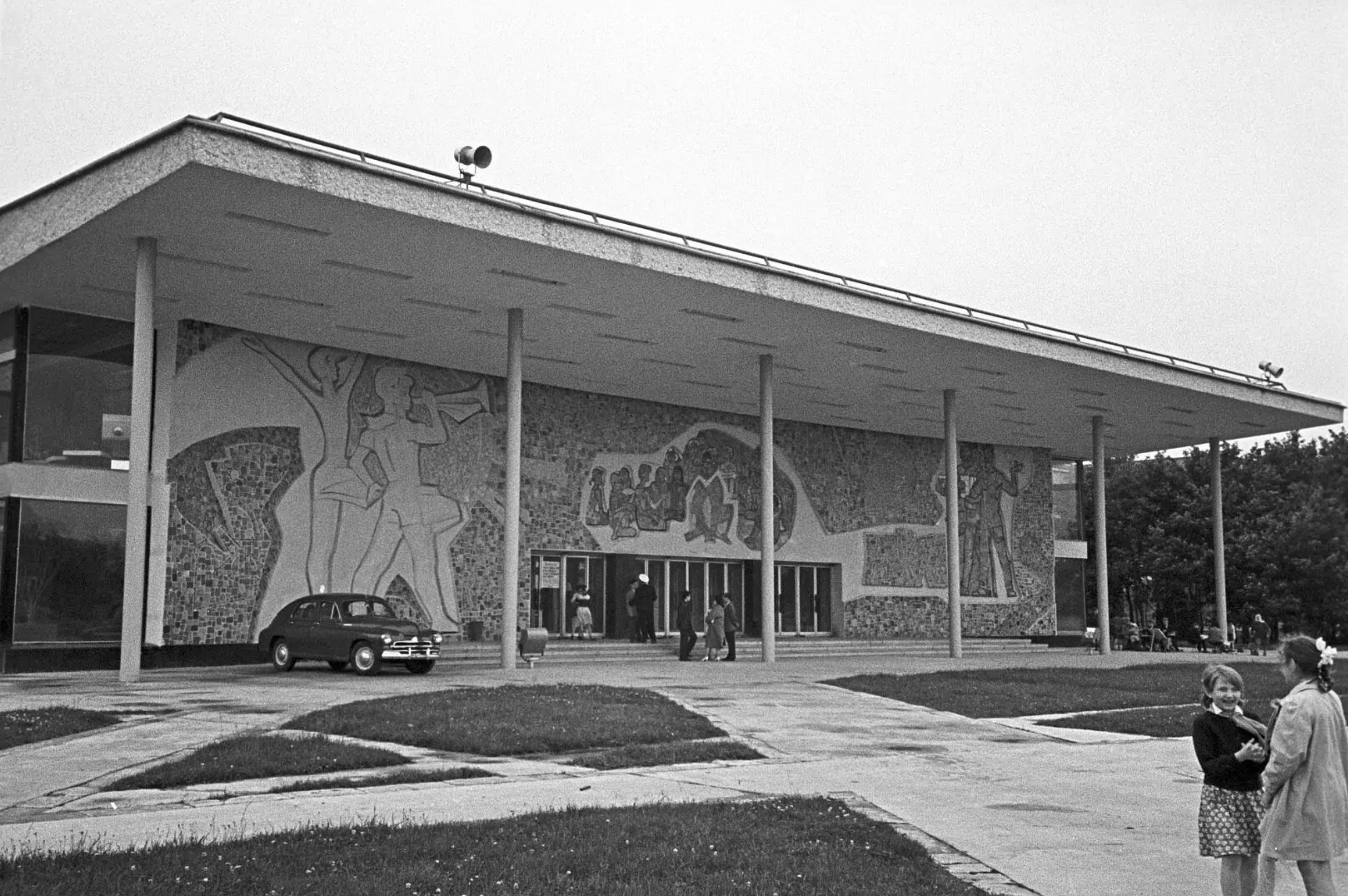 |
| |
1958-1961, Pioneers Palace, Moscow, RUSSIA |
| |
|
| |
 |
| |
1965-1971, Doma Aspirantov i Stazherov Mgu, Moscow, RUSSIA, N. Osterman |
| |
|
| |
 |
| |
1967-1974, Swan Residence, Moscow, RUSSIA, A. Meherson |
| |
|
| |
 |
| |
1973-1990, Russian Academy of Sciences, Moscow, RUSSIA, Y. Platonov |
| |
|
| |
 |
| |
1975-1982, Severnoe Chertanovo, Moscow, RUSSIA, GROUP OF ARCHITECTS |
| |
|
| |
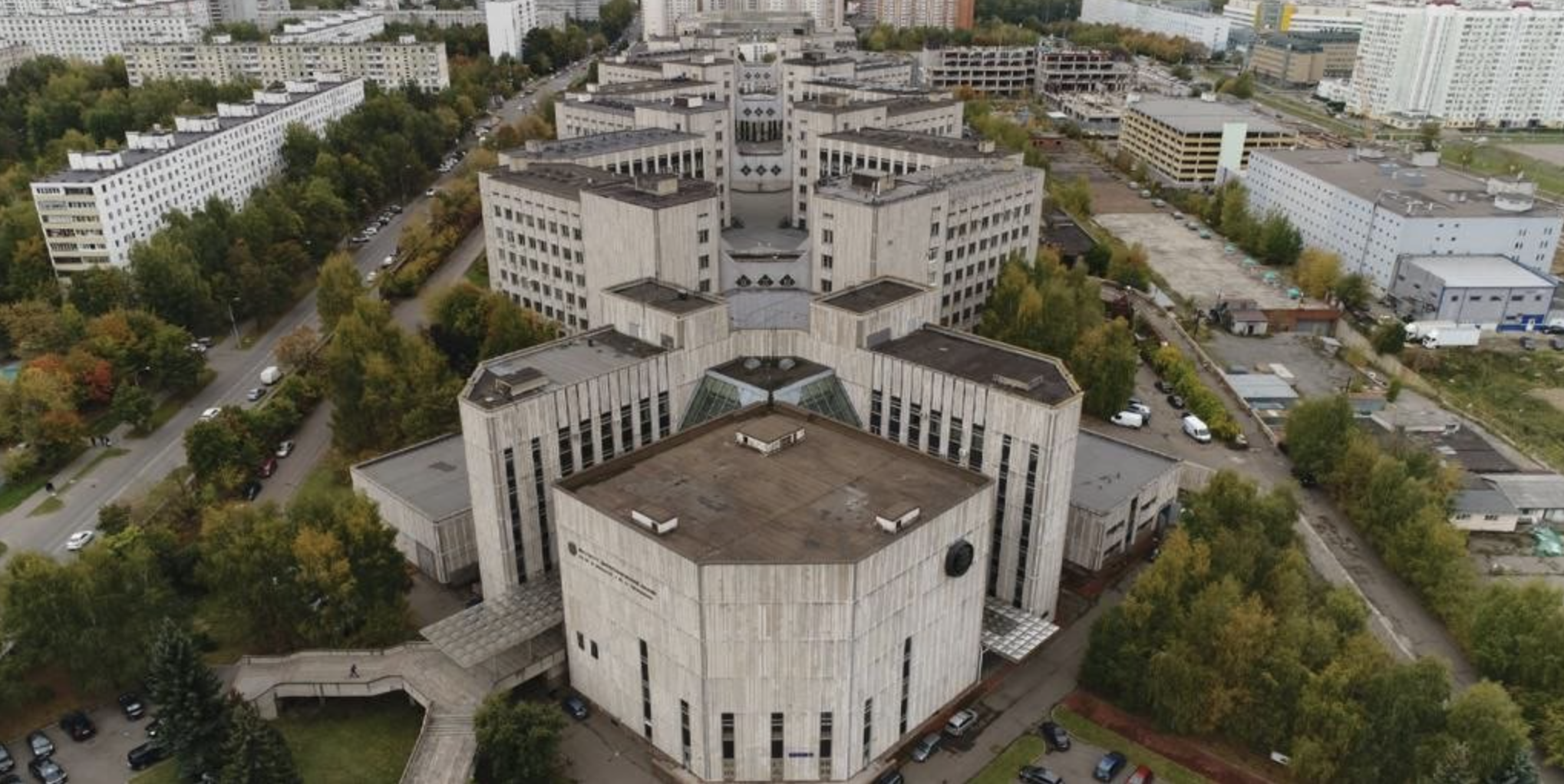 |
| |
1976-1988, Bioorganic Research Institute, Moscow, RUSSIA |
| |
|
| |
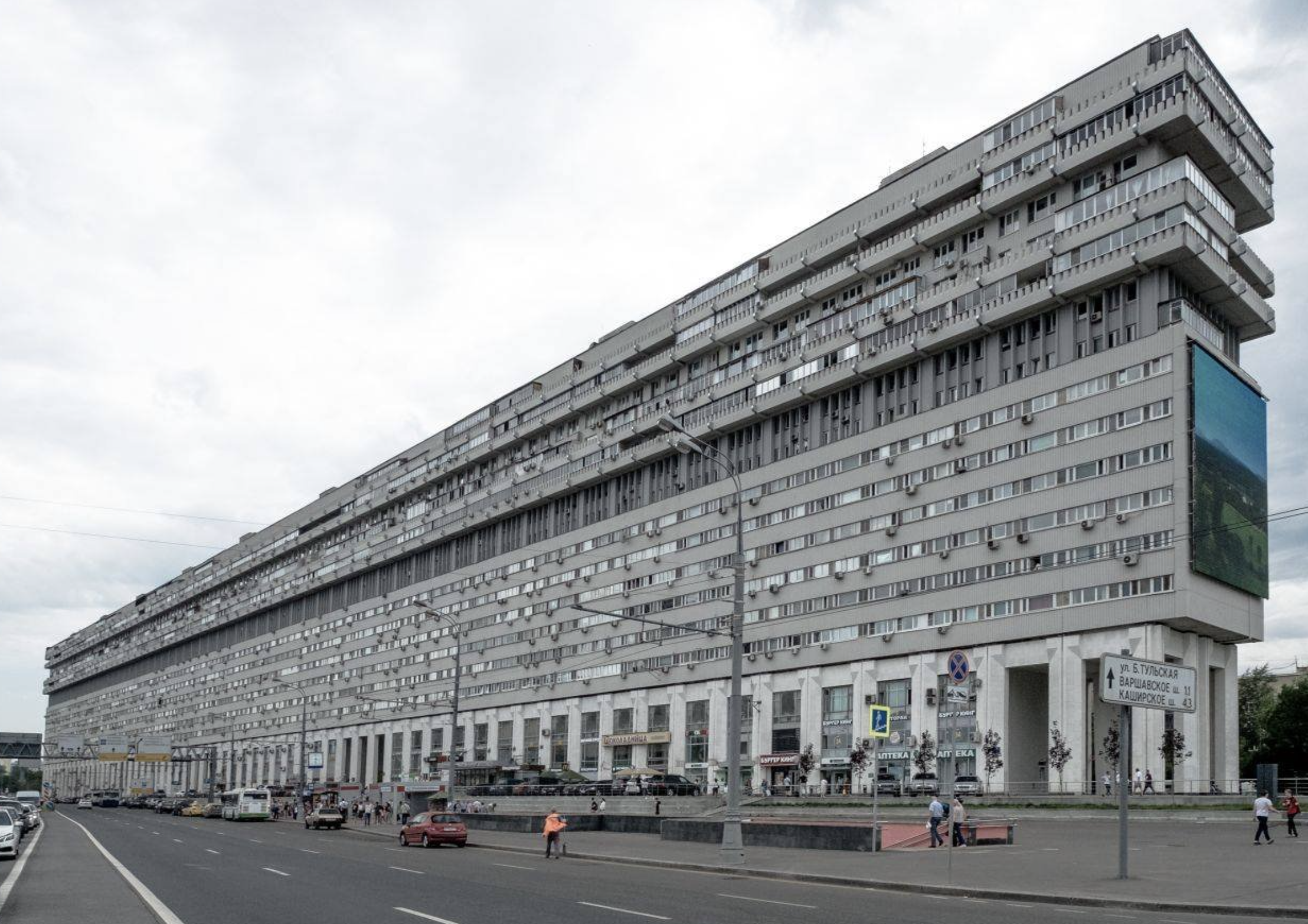 |
| |
1986, House of Nuclear Workers, Moscow, RUSSIA, V. Voskresensky |
| |
|
| |
 |
| |
2011-2015, Garage Museum of Contemporary Art , Moscow, RUSSIA, REM KOOLHAAS |
| |
|
| |
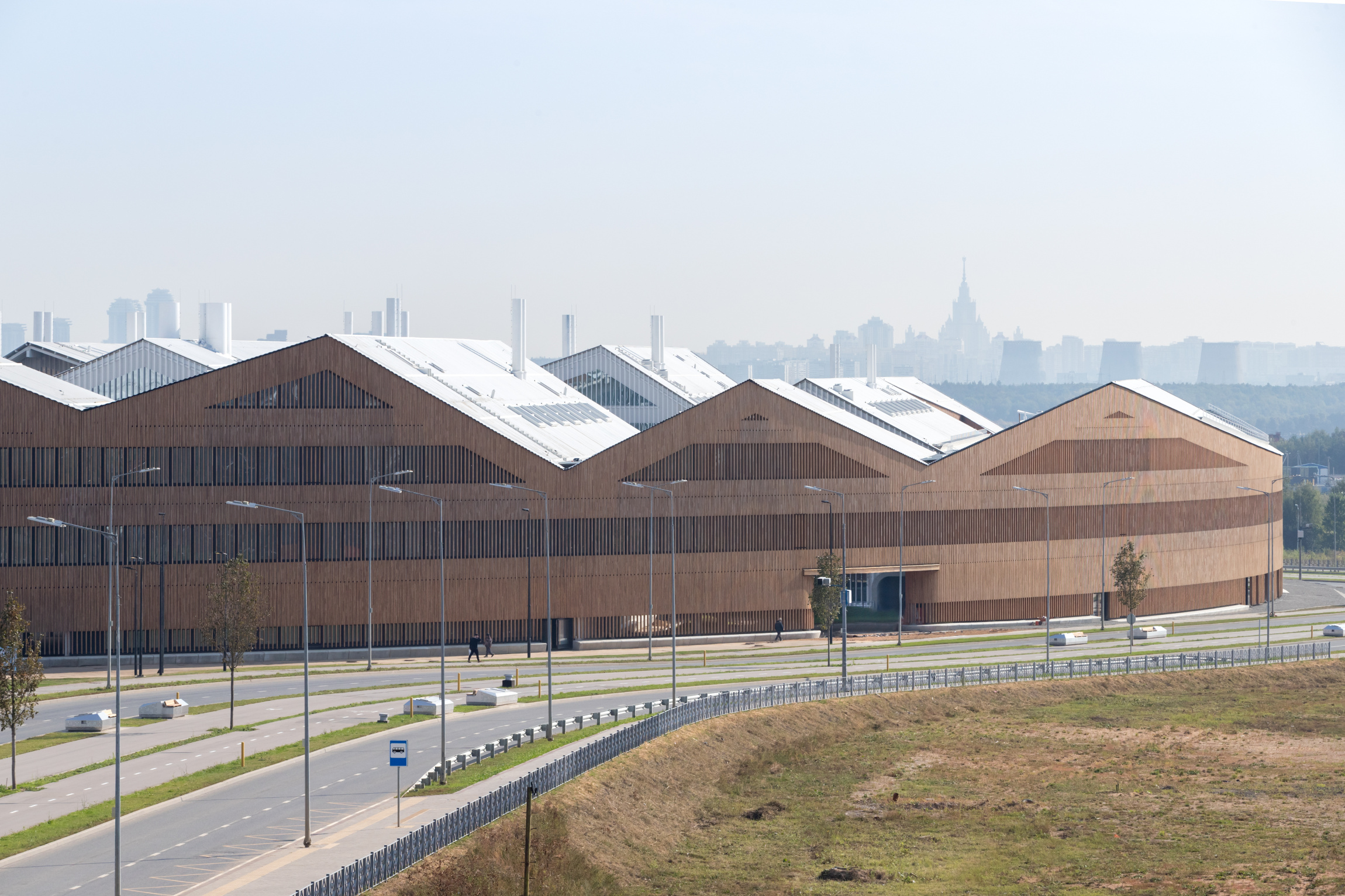 |
| |
2013-2018, Skolkovo Institute of Science and Technology, Moscow, Russia, HERZOG & DE MEURON |
| |
|
| |
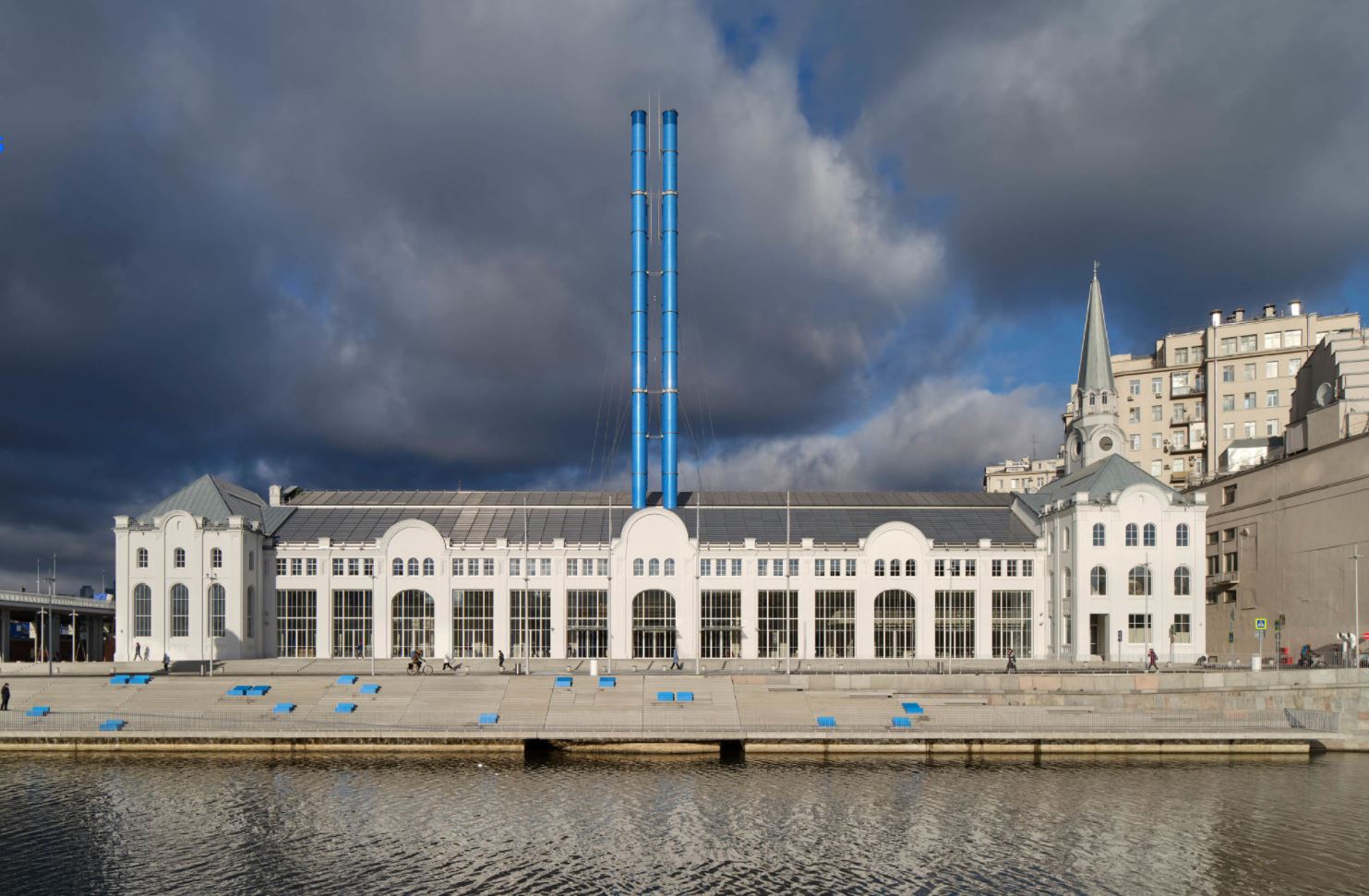 |
| |
2015, GES 2, MOSCOW, RUSSIA, RENZO PIANO |
| |
|
| |
|
| |
|
| |
|
| |
|
| |
|
| |
|
| |
|
| ARCHITECTS |
|
| |
ARCHITECTS: RUSSIA and USSR |
| |
|
| |
|
| |
|
| |
|
| |
|
| |
|
| |
|
| BUILDINGS |
|
| |
1911, Post Office, Moscow, RUSSIA, VESNIN BROTHERS |
| |
|
| |
1928, NARKOMFIN HOUSE, MOSCOW, RUSSIA, MOISEI GINZBURG |
| |
|
| |
1929, Mostorg Department Store, Moscow, RUSSIA, VESNIN BROTHERS |
| |
|
| |
1929, RUSAKOV CURTURE HOUSE, MOSCOW, RUSSIA, KONSTANTIN MELNIKOV |
| |
|
| |
1929, MELNIKOV HOUSE, MOSCOW, RUSSIA, KONSTANTIN MELNIKOV |
| |
|
| |
1933, Centrosoyus, Moscow, Russia, LE CORBUSIER |
| |
|
| |
1934, Society of Tsarist Political Prisoners Club, Moscow, RUSSIA, VESNIN BROTHERS |
| |
|
| |
1937, Proletarian Region Club, Moscow, RUSSIA, VESNIN BROTHERS |
| |
|
| |
2011-2015, Garage Museum of Contemporary Art , Moscow, RUSSIA, REM KOOLHAAS |
| |
|
| |
2013-2018, Skolkovo Institute of Science and Technology,
Moscow, Russia, HERZOG & DE MEURON |
| |
|
| |
2015, GES 2, MOSCOW, RUSSIA, RENZO PIANO |
| |
|
| |
|
| |
|
| |
|
| |
|
| |
|
| |
|
| MORE |
|
| |
INTERNAL LINKS
CONSTRUCTIVISM; RUSSIA and USSR; SOVIET ARCHITECTURE; ST. PETERSBURG;
FUTHER READING
Although there are few specialized studies of modern architecture in Moscow, the city receives primary attention in most studies of Soviet modernism. For those with knowledge of Russian, the recently published mammoth encyclopedia "Moscow Encyclopedics" has excellent coverage of the city's architecture.
Barkhin. M.G.., et al. (editors), Master soverskot arkhitektury ob
arkhitekture, 2 vols. Moscow: Iskussevo, 1975
Brumfield. William Craft. The Origins of Modernism in Russian
Architecture. Berkeley: University of California Pres. 1991
Brumfield, William Craft. A History of Russian Architecture,
Cambridge and New York: Cambridge University Press, 1993
Cohen, Jean Louis, Le Corbusier en la mystique de l'URSS. Théorie
pour Mascon, 1928-1936, Brussels: Mardaga, 1987: as Le
Carbusier and the Mystique of the USSR. Theeries and Projects for
Moscow, 1928-1936, translated by Kenneth Hylcon, Princeton,
New Jersey: Princeton University Press, 1991
Cooke, Catherine, Rusian Avant-Garde Theories of Art. Architecture,
and the Cary, London: Academy Editions, 1995
1konnikov, Andrei Vladimirovich, Arkhitektura Moskuy, XX sek
(Moscow Architecture. 20th Century), Moscow. Moskovskil
Rabochi, 1984
Khan Magomedox, Selim O., Pioneen of Soviet Architecture: The
Search for New Solutions in the 1920k and 19304, translated by
Alexander Liven, edited by Catherine Cooke, New York:
Rizzoli, and London: Thames and Hudson, 1987
Kirichenko, Ergeniia, Ruskaia arkhinektura, 1830-1910-kh godor
(Russian Architecture, 1830-1910), Moscow: I Kussevo, 1978
Kopp, Anatole. Constructivist Architecture in the USSR. London:
Academy Editions, and New York: St. Martin's Press, 1985
Murrell, Kathleen Betton, Mesow Art Newreau, London: Wilson,
1997
Riabushin, A.V., and N.J. Smolina, Landmarks of Sennet Architecture.
1917-1991, New York: Rizzoli, 1992
Shmidt, S.O., Moskva: Entsiklopediia (Moscow: Encyclopedia),
Moscow: Bolshaia Rossiiskaia Rotsiklopediia, 1997
Starr, S. Frederick, Melikon: Solo Architect in a Mas Society,
Princeton, New Jersey: Princeton University Press, 1978
Zemtsov, S.M. (editor), Zodchir Monkey (Architects of Moscow), 2
vols., Moscow: Moskovskii Rabochil. 1981-88
Москва: архитектура советского модернизма. 1955–1991. Справочник-путеводитель
|
| |
|
|

